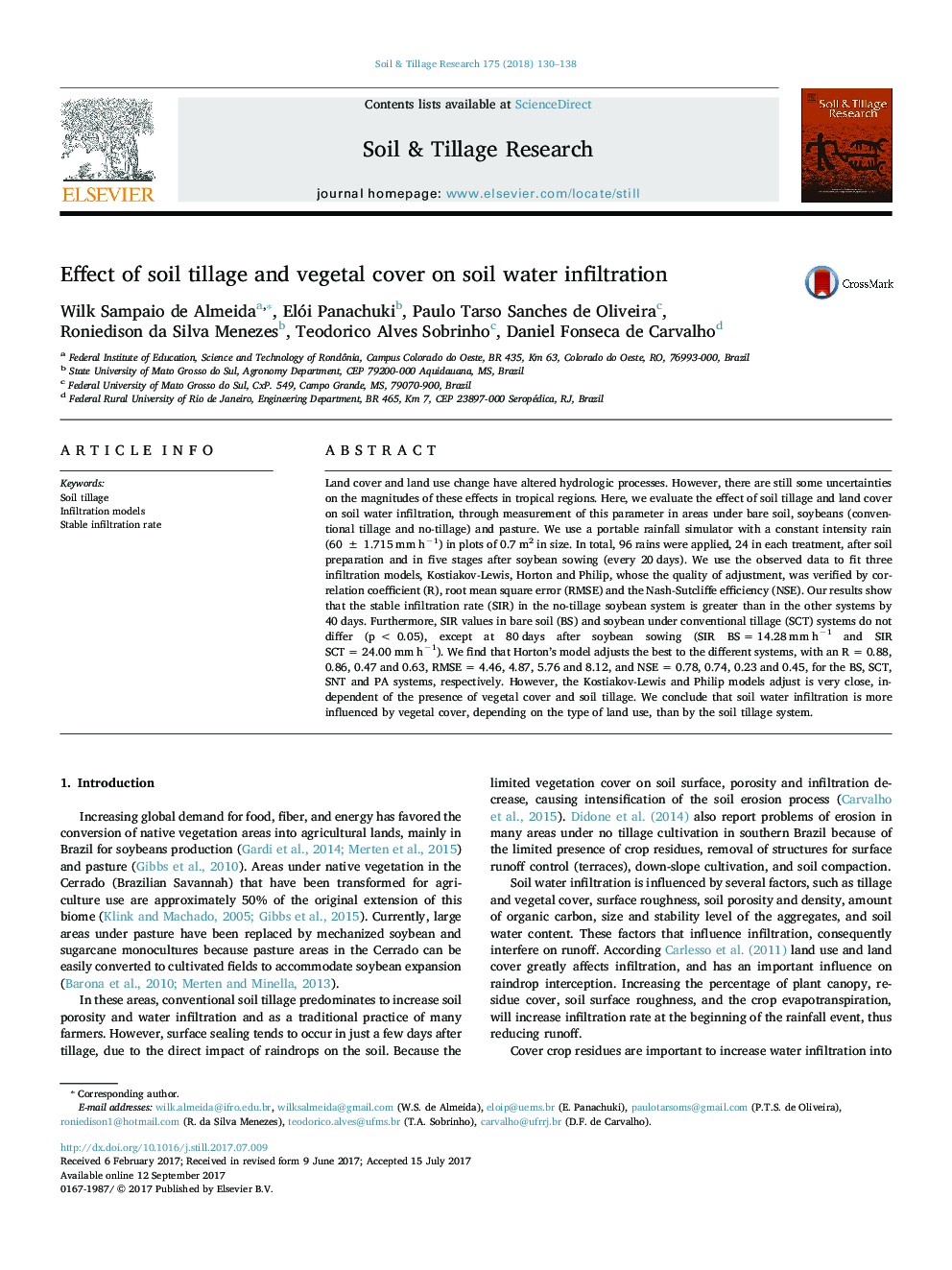| Article ID | Journal | Published Year | Pages | File Type |
|---|---|---|---|---|
| 4927427 | Soil and Tillage Research | 2018 | 9 Pages |
â¢Land cover and land use change have altered infiltration processes.â¢We evaluate soil water infiltration in areas under bare soil, soybeans, and pasture.â¢Infiltration in the no-tillage soybean is greater than other systems by 40 days.â¢Infiltration in bare soil and soybean in conventional tillage systems do not differ.â¢Horton's model adjusts the best to the vegetal cover and undisturbed soil conditions.
Land cover and land use change have altered hydrologic processes. However, there are still some uncertainties on the magnitudes of these effects in tropical regions. Here, we evaluate the effect of soil tillage and land cover on soil water infiltration, through measurement of this parameter in areas under bare soil, soybeans (conventional tillage and no-tillage) and pasture. We use a portable rainfall simulator with a constant intensity rain (60 ± 1.715 mm hâ1) in plots of 0.7 m2 in size. In total, 96 rains were applied, 24 in each treatment, after soil preparation and in five stages after soybean sowing (every 20 days). We use the observed data to fit three infiltration models, Kostiakov-Lewis, Horton and Philip, whose the quality of adjustment, was verified by correlation coefficient (R), root mean square error (RMSE) and the Nash-Sutcliffe efficiency (NSE). Our results show that the stable infiltration rate (SIR) in the no-tillage soybean system is greater than in the other systems by 40 days. Furthermore, SIR values in bare soil (BS) and soybean under conventional tillage (SCT) systems do not differ (p < 0.05), except at 80 days after soybean sowing (SIR BS = 14.28 mm hâ1 and SIR SCT = 24.00 mm hâ1). We find that Horton's model adjusts the best to the different systems, with an R = 0.88, 0.86, 0.47 and 0.63, RMSE = 4.46, 4.87, 5.76 and 8.12, and NSE = 0.78, 0.74, 0.23 and 0.45, for the BS, SCT, SNT and PA systems, respectively. However, the Kostiakov-Lewis and Philip models adjust is very close, independent of the presence of vegetal cover and soil tillage. We conclude that soil water infiltration is more influenced by vegetal cover, depending on the type of land use, than by the soil tillage system.
